Garden Ideas by the Sea: Transform Your Coastal Space
If you love the sea and also enjoy gardening, combining the two can create a relaxing and beautiful garden space. Why not create a garden that reflects the beauty and tranquility of the coast right in your own backyard? Coastal gardens offer a unique aesthetic with their soft colors, natural materials, and hardy plants that thrive in sandy soils and salty air.
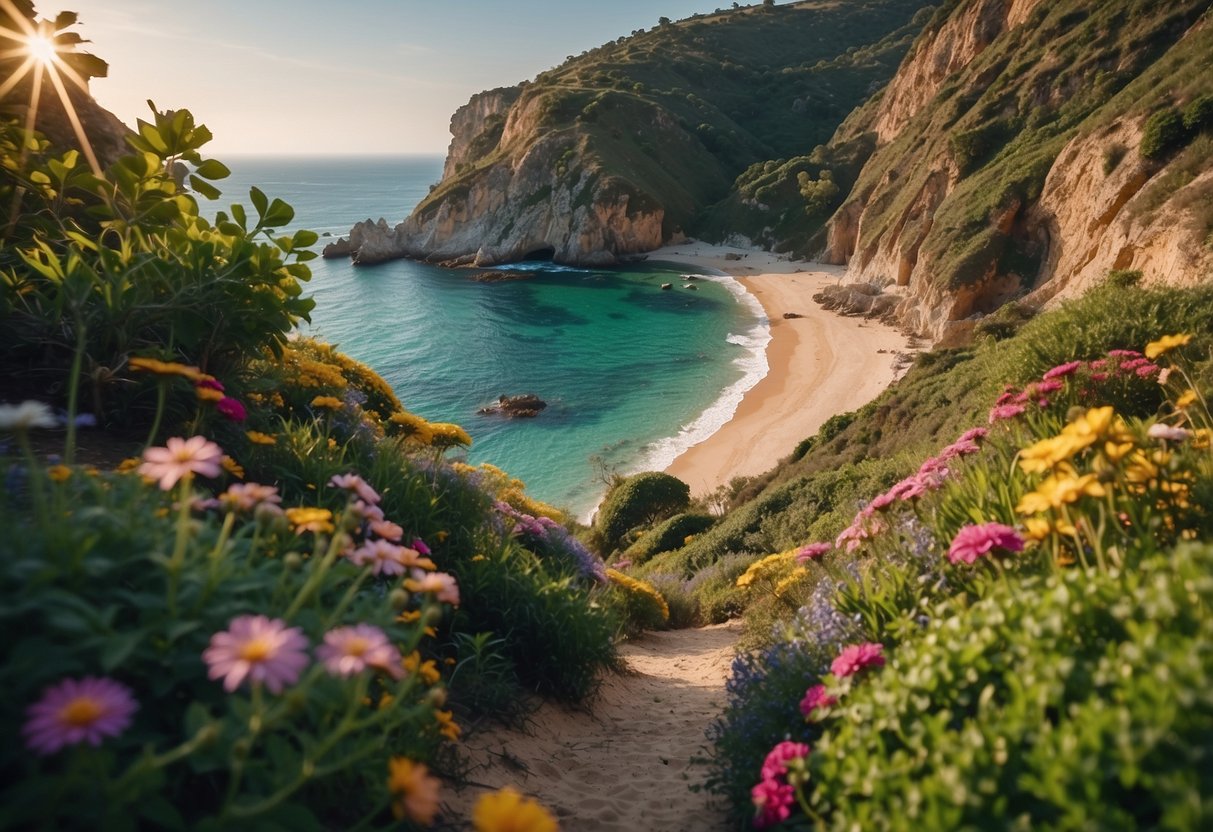
Whether you live by the ocean or just want to bring a bit of the seaside to your home, a coastal garden can provide a peaceful retreat. Imagine relaxing in your garden, surrounded by lush plants and the soothing color palette inspired by the sea.
1) Coastal Succulent Rock Garden

Creating a coastal succulent rock garden is a great idea for seaside landscapes. Succulents are hardy and can thrive in sandy, salty conditions.
You can add height to your garden by stacking flat rocks behind your succulents. This not only gives your garden a layered look but also helps with drainage.
Consider including plants like sea lavender and sedums for a variety of colors and textures. These plants are low-maintenance and perfect for coastal regions.
For more design ideas, visit Succulent Rock Garden Ideas.
2) Seaside Fairy Garden Container

Creating a seaside fairy garden container can be a charming addition to your space. To start, find a large, shallow container that can hold sand, small pebbles, and perhaps some shells.
Add coastal-themed miniatures like tiny beach chairs, umbrellas, and miniature sailboats.
Consider adding small plants like succulents, which can resemble beach flora. You could also sprinkle in some fairy lights to add a magical glow to your creation. For more inspiration, check out these ideas from Pinterest.
3) Beach Pebble Pathway

A beach pebble pathway adds charm to any coastal garden. You can use these pathways to lead guests through your garden or to highlight special areas.
Consider using Mexican beach pebbles for their smooth texture and lovely colors. These pebbles can fill spaces between larger pavers or form curvy paths on their own.
Placing pebbles around steps or in open areas can make your garden feel more connected and visually appealing. Use patterns and colors to create a unique look that matches your garden’s style.
4) Seagrass Border
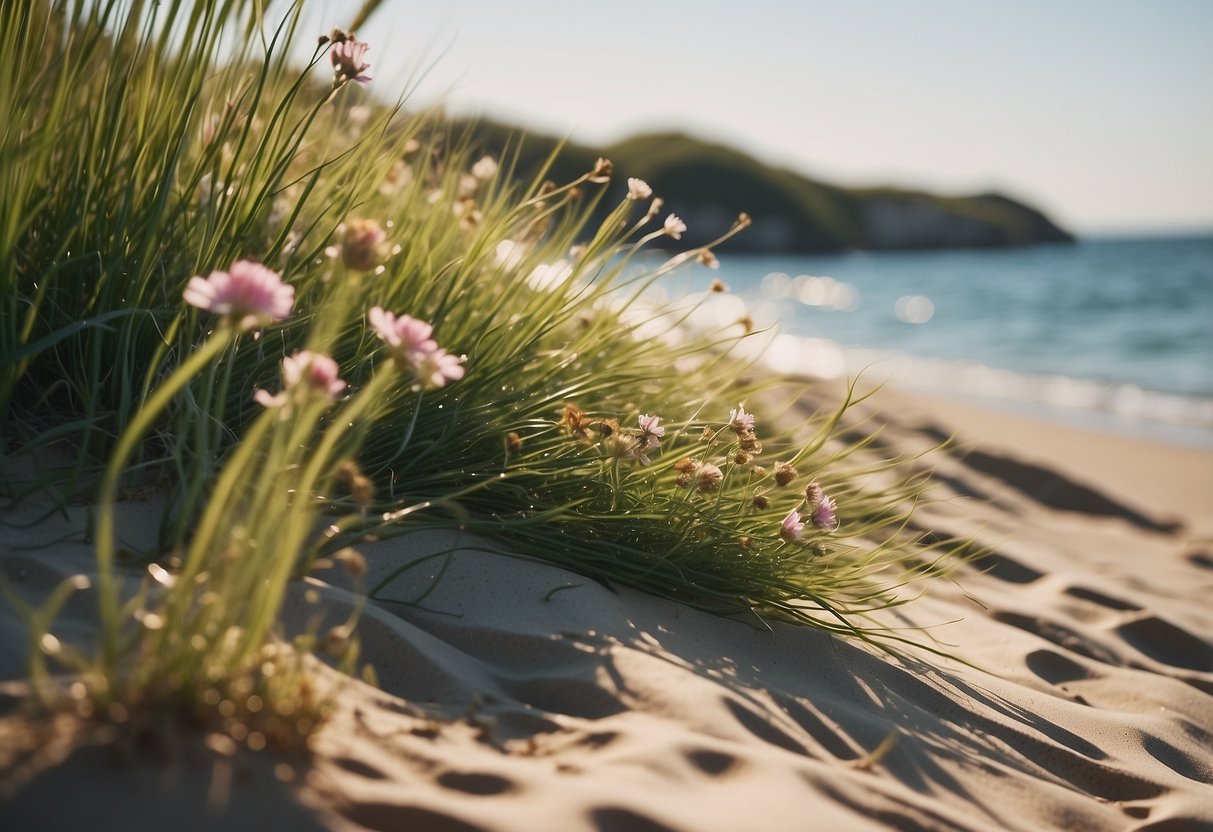
Adding seagrass borders to your garden can bring a touch of the coast right to your doorstep. Seagrasses like Blue Oat Grass (Helictotrichon sempervirens) are perfect for the seaside, thriving in sandy soil. The striking blue color of the grass adds a cool, calming vibe to your garden.
These grasses are not just beautiful; they are also tough. They can handle salt winds and require little maintenance. Plant them along paths or borders to create a natural, flowing look. This way, your garden feels connected to the surrounding coastal landscape.
Using seagrass borders can help create a serene and beachy atmosphere. Surround your garden paths with these grasses to enjoy the relaxing feel of a coastal retreat.
5) Driftwood Sculptures

You can add a natural and artistic touch to your seaside garden with driftwood sculptures. Driftwood offers a unique look, shaped by the ocean.
Use larger pieces for standalone sculptures. These can be placed near entrances or focal points in your garden.
Smaller driftwood pieces can work well as accents around plants or other features. They bring an eco-friendly aspect to your garden decor.
For more ideas, look at driftwood sculptures for a beach-themed garden.
6) Tropical Foliage Corner
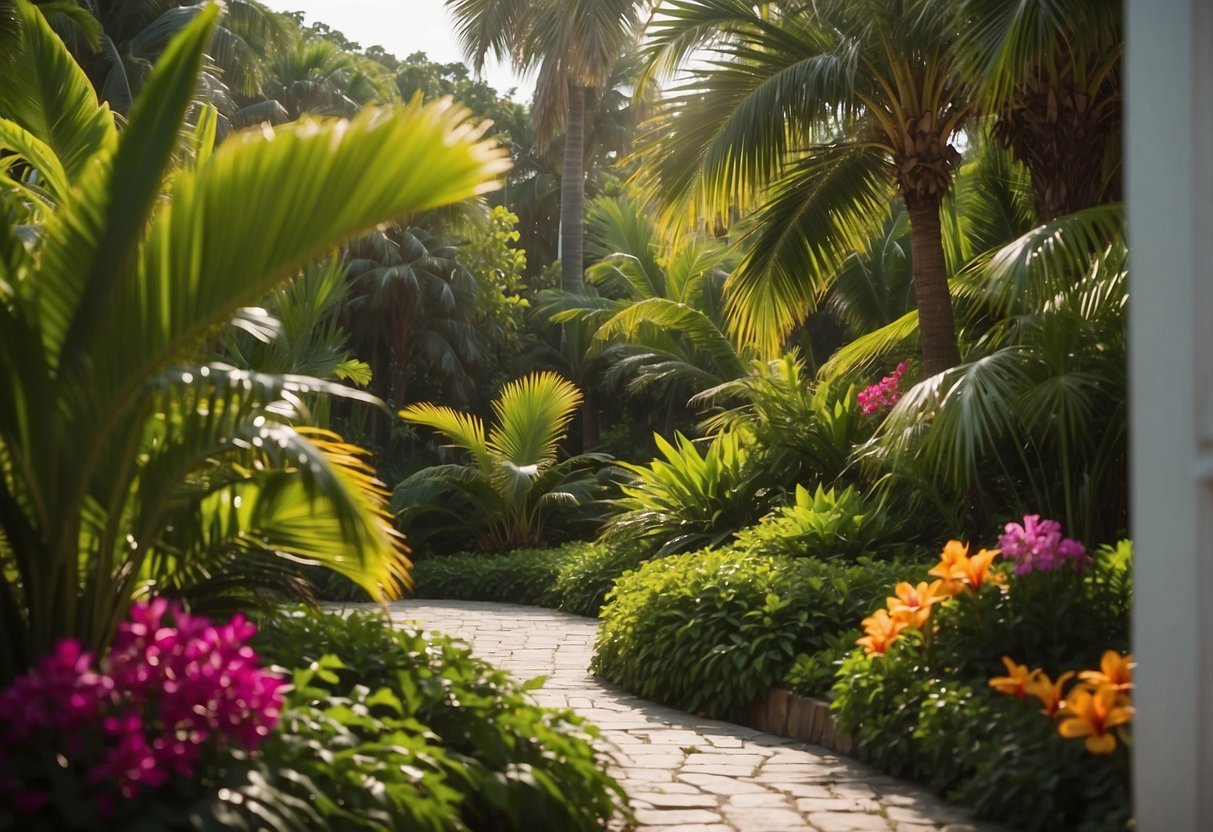
Create a lush, vibrant space with a Tropical Foliage Corner in your seaside garden. Use plants like palm trees, ferns, and elephant ears to give it that exotic touch.
Add some soothing water features. A small pond or a fountain can bring a sense of calm.
Don’t forget to include shade plants to mimic the dappled light found in tropical forests. Shady spots can also make your garden more inviting.
7) Salt-tolerant Wildflower Meadow

If you live by the sea, creating a salt-tolerant wildflower meadow is a great choice. Many coastal plants thrive in salty conditions and bring vibrant colors to your garden.
Choose flowers like sea lavender, which grows well in sandy soil and can handle salt spray. Other good choices are nasturtiums and calendula which add beauty and are also edible.
Use grasses with strong, fibrous roots to prevent soil erosion. These grasses will keep your meadow looking full and lush, even in windy conditions.
Explore more ideas for a coastal garden at The Wildlife Trusts.
8) Nautical-themed Garden Lights

Add a touch of seaside charm to your garden with nautical-themed lights. Use lanterns shaped like lighthouses to add an authentic coastal vibe.
String lights with tiny anchors or seashells can create a whimsical atmosphere. Position them around seating areas or along pathways.
Consider solar-powered options shaped like buoys or starfish to keep your garden eco-friendly and delightful. These lights not only brighten up your space but also enhance the overall nautical theme.
9) Shell and Coral Garden Edging
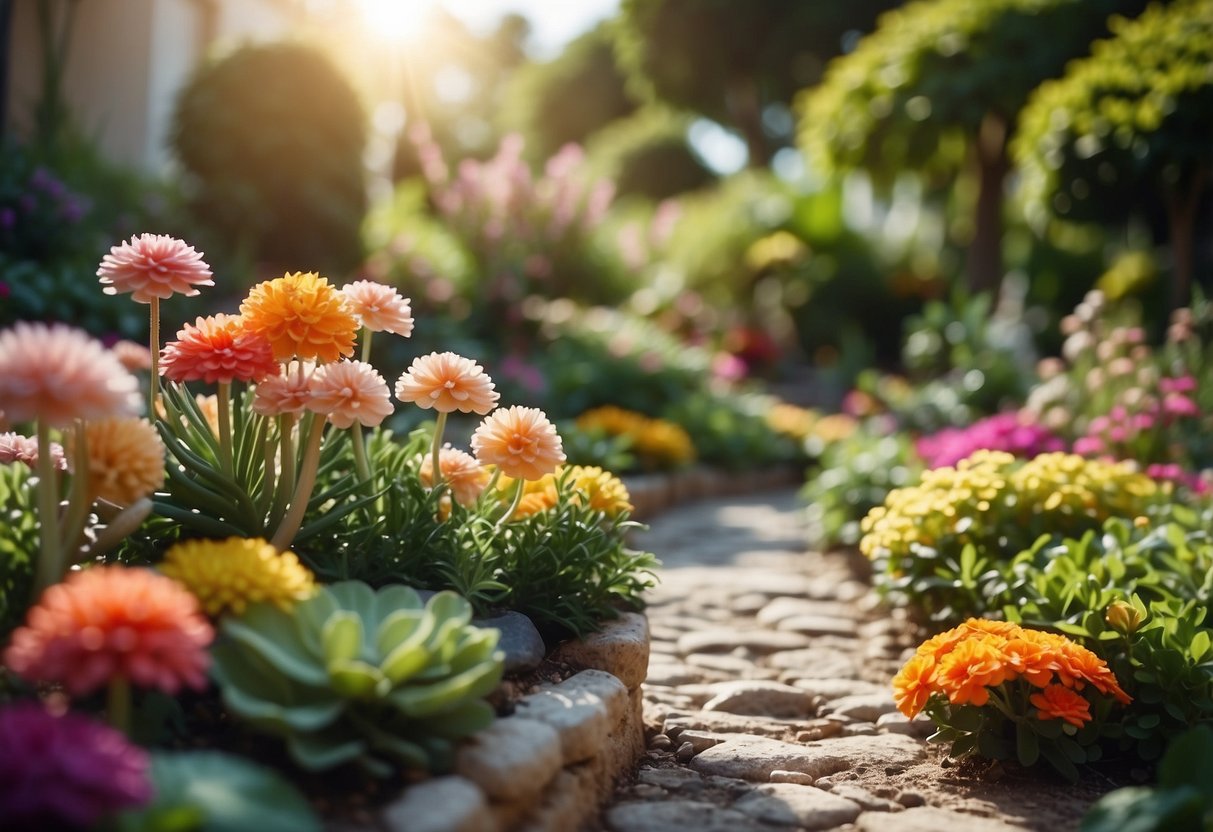
Use shells to create a unique border for your garden. Spread large and small shells along the edges of flower beds. This adds a beachy feel to your space.
You can also use pieces of coral for edging. Coral can provide texture and an ocean vibe to your garden’s border.
Consider alternating shells and coral to mix things up. This creates a varied and interesting look. Get creative and enjoy your seaside garden!
10) Raised Beds with Sand Soil

Using sand soil in raised beds can be great for your seaside garden. Sand drains quickly, making it perfect if your garden tends to get a lot of water.
Mix sand with compost to add nutrients. This combo can help your plants grow better.
Keep the bed in full sun and water it regularly to maintain healthy plants.
Selecting Coastal Plants

Gardening by the sea requires choosing plants that can thrive in challenging coastal conditions. Look for species that can handle drought and salt exposure.
Drought-Tolerant Varieties
Coastal gardens often face dry conditions due to sandy soils that drain quickly. It’s important to select plants that can survive without frequent watering. Sea lavender (Limonium latifolium) is an excellent choice. It grows well in sandy soil and its small paper-like flowers make it a colorful addition to any garden. Sea oats (Chasmanthium latifolium), native to North America, is another good option. This ornamental grass adds texture and movement with its unique seed plumes and bronze fall foliage.
Learn more about sea lavender and sea oats.
Salt-Resistant Species
Salt spray and salty soils can damage many plants, so choose varieties that can tolerate these conditions. Sea holly (Eryngium x zabellii ‘Blue Waves’) is a popular coastal plant known for its prickly, silver foliage and cone-like blooms that add texture to your garden. Another reliable option is sea thrift (Armeria maritima), which features pink pom-pom flowers and thrives even in exposed locations. These hardy plants can grow between rocks or in rock gardens.
More details about sea holly and sea thrift.
Designing for Wind Exposure

Gardens by the sea often face strong winds that can damage plants and make areas less enjoyable. Addressing wind exposure involves creating effective windbreaks and choosing plants that can withstand the elements.
Windbreak Solutions
Creating windbreaks is essential in a coastal garden. Fences, hedges, and trees are common choices to shield your garden from wind. Fences made of materials like wood or glass can block or redirect the wind. A glass panel paired with a salt-tolerant shrub offers privacy and decor while maintaining your ocean view (Houzz).
Planting dense hedges or rows of trees is another effective method. Choose species that are hardy and wind-resistant, like evergreens. Hedges of privet or oleander work well. Ensure they are planted close enough to form a dense barrier but far enough apart to allow growth. This makes a natural and appealing windbreak.
Sturdy Plant Choices
Selecting the right plants ensures your seaside garden thrives despite harsh winds. Look for plants that are both salt-tolerant and wind-resistant. Examples include grasses, succulents, and certain shrubs. Grasses like Marram grass and Pampas grass are excellent for sandy soils and wind. Shrubs such as Rosa rugosa and Elaeagnus are hardy options.
Besides shrubs and grasses, consider perennials like sea holly and lavender. These plants thrive in windy conditions and add beauty to your garden. They stabilize the soil and reduce erosion. Ground covers like ice plant can also help by covering exposed soil and reducing the impact of wind. Choosing sturdy plants ensures your garden remains lush and vibrant year-round.
Maintaining Soil Quality
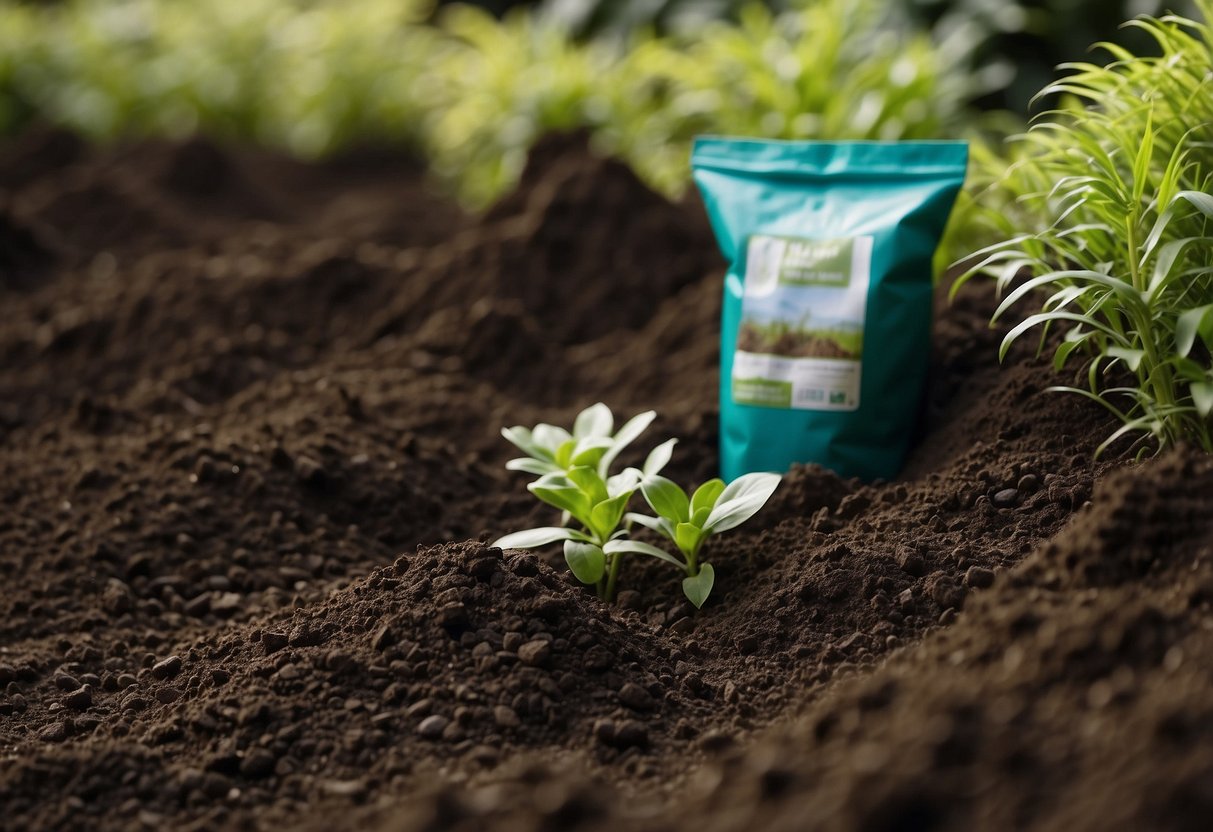
When gardening by the sea, maintaining soil quality is crucial due to the unique challenges of coastal environments. Key strategies include improving drainage and using nutrient-rich soil mixes to support healthy plant growth.
Improving Drainage
Sandy soils near the coast often drain too quickly, leaving plants thirsty. Start by testing your soil to understand its composition. Consider adding organic matter such as compost.
Compost helps sandy soil hold more water, reducing the need for frequent watering. You might also want to try using materials like peat moss or well-rotted manure. These materials can enhance the soil structure, making it better at retaining moisture.
Another effective method is mulching around the base of your plants. This not only helps to retain moisture but also protects the soil from erosion. Mulch can be anything from straw to wood chips. Choose the option that best fits your garden’s aesthetic and needs.
Nutrient-Rich Soil Mixes
To ensure your coastal plants thrive, it’s important to use soil rich in nutrients. Start by incorporating organic fertilizers into your soil. These can range from bone meal to fish emulsion, each providing essential nutrients like nitrogen, phosphorus, and potassium.
You should also test your soil’s pH level. Coastal soils can sometimes be too alkaline or too acidic for some plants. Use lime to raise the pH or sulfur to lower it, based on your test results.
For a more sustainable approach, consider cover crops. Plants like clover or vetch can be grown, then turned back into the soil to add nutrients and organic matter. This not only enriches the soil but also improves its structure and water-holding capacity.
Make sure to regularly check your soil’s condition. Good soil care involves ongoing attention, so keep an eye on how your soil responds to different treatments and adjust accordingly. For more detailed tips, you can visit Gardening by the Sea: Tips and Tricks.







